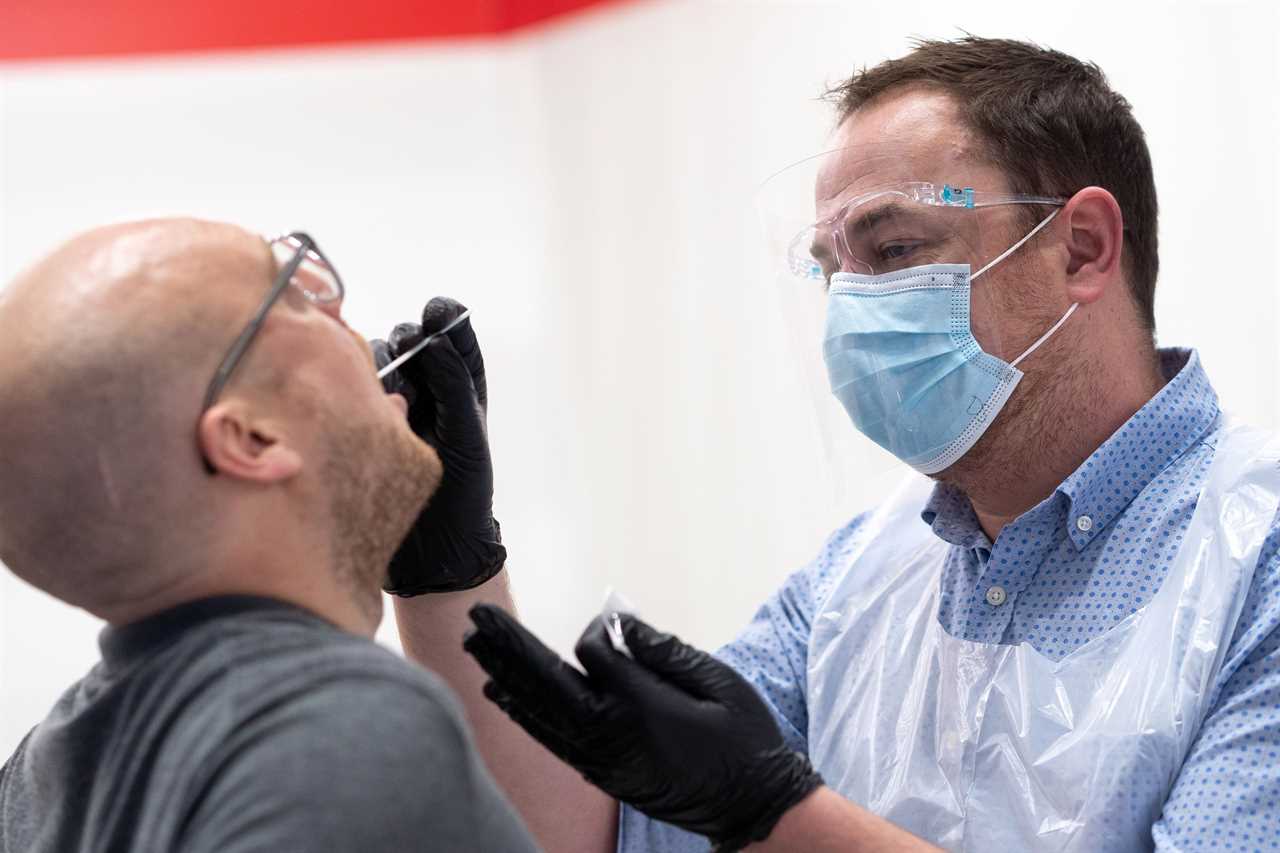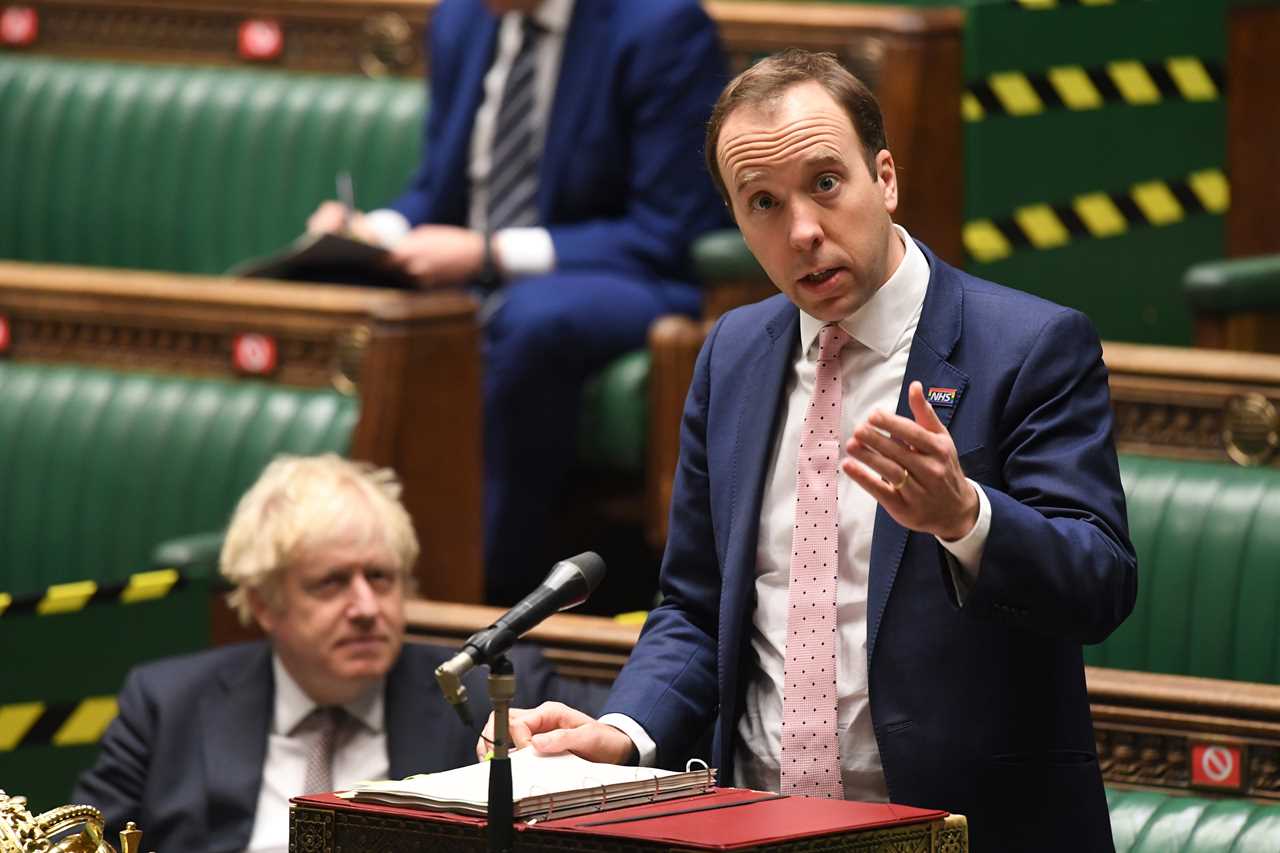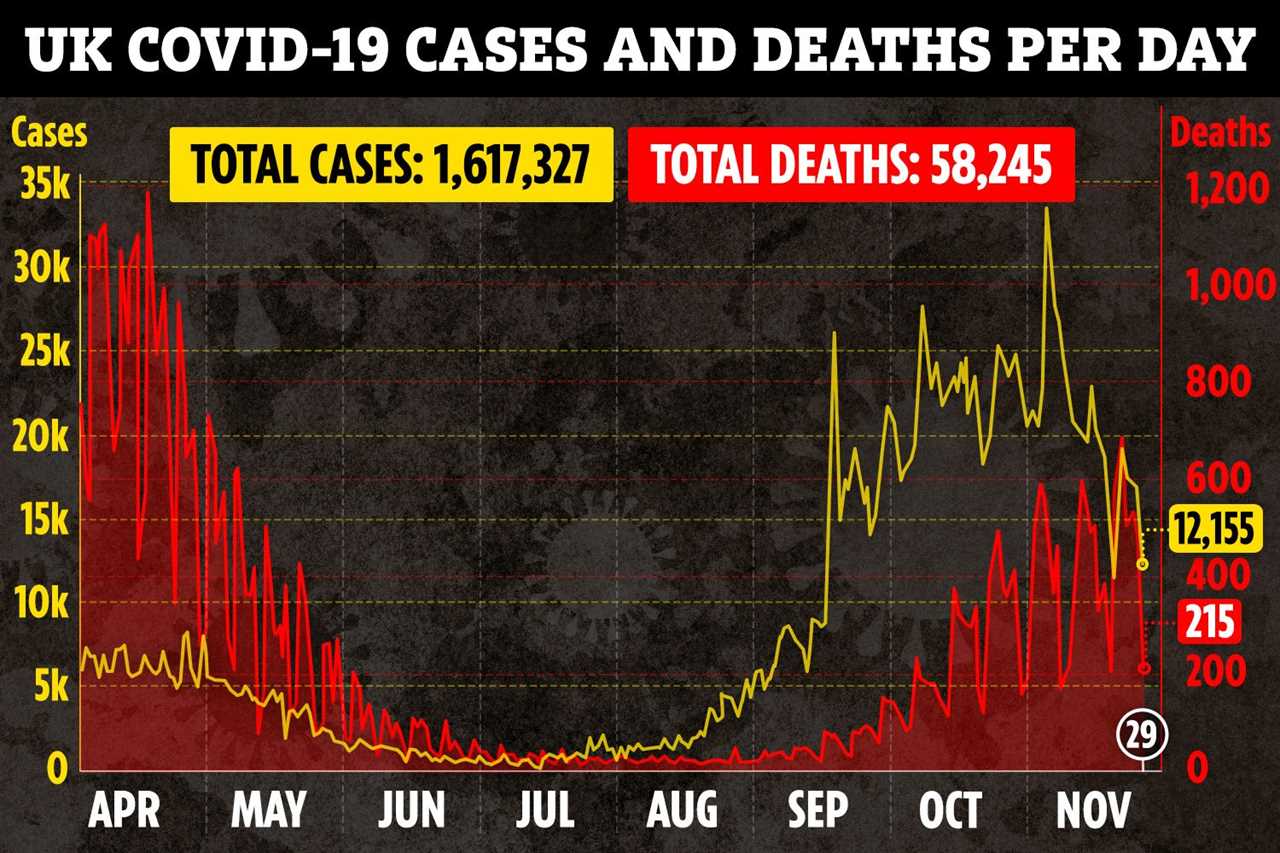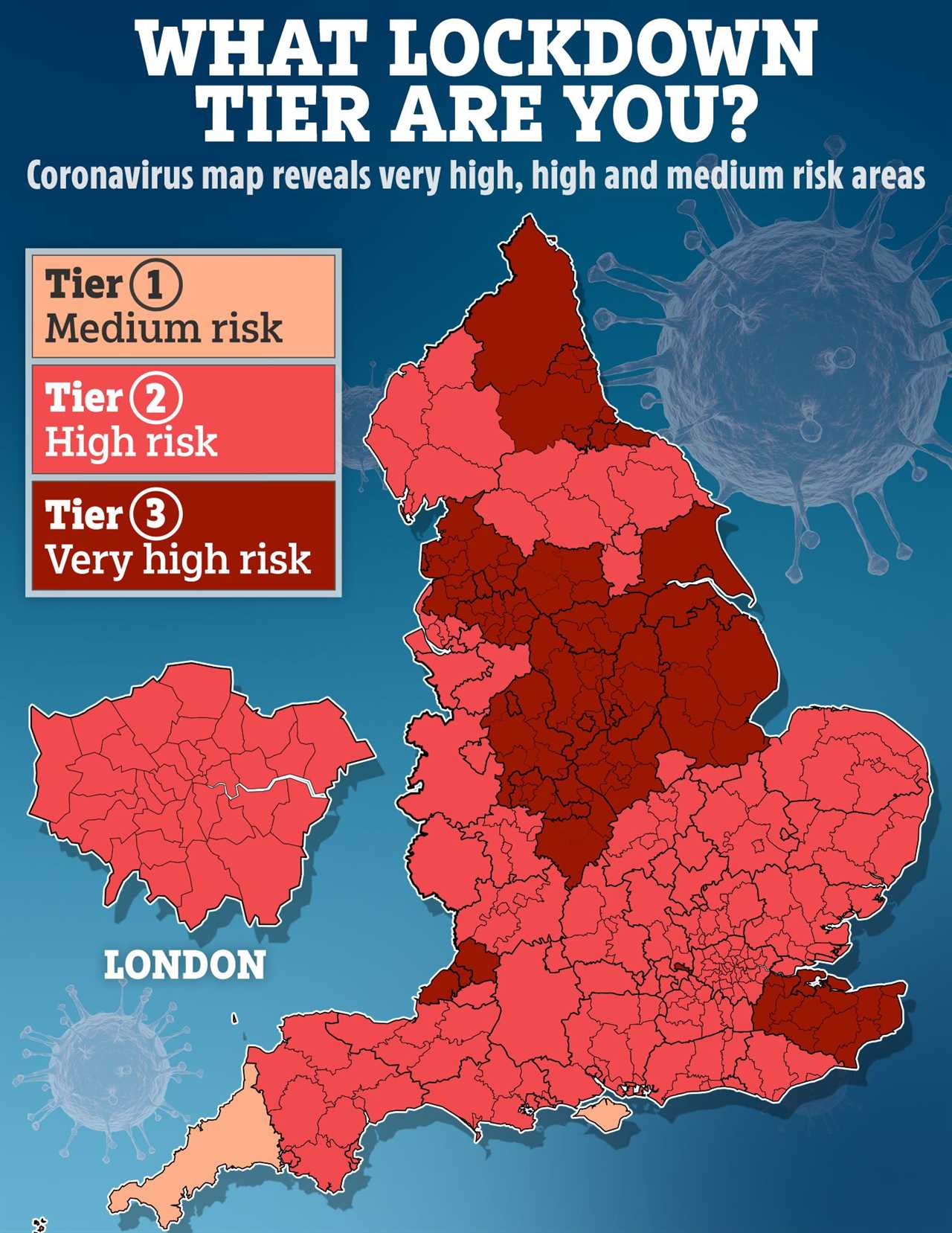CORONAVIRUS infections have fallen 30 per cent across England, new data has revealed.
A study of 105,000 volunteers found that infections also dropped by 50 per cent in the North of England during the second national lockdown.

The study by Imperial College London and Ipsos MORI shows that the R-rate for the nation is now around 0.88.
The data was collected between 13th and 24th of November.
The study found that 96 people per 10,000 were infected, down from 132 per 10,000 between October 26 and November 2.
Health Secretary Matt Hancock said the survey backs up findings from SAGE that stronger measures are still needed following the end of the national lockdown.
Infections fell by over 50 per cent in the North West and North East, but the prevalence is highest in the West Midlands, East Midlands, Yorkshire and the Humber.
It comes after:
- The UK on Sunday recorded another 12,155 new coronavirus cases while 215 people who tested positive for the virus have died. They are down from Saturday when 479 deaths and 15,871 cases were announced.
- Boris Johnson warned Tory MPs to back his tiers system or face a THIRD lockdown.
- The changes mean Brits will only to be able to meet a pal for a pint indoors at 732 pubs nationwide.
- But some shops will be allowed to open 24/7 to boost Christmas trade.
‘FOOT OFF THE PEDAL’
Mr Hancock said: “Thanks to the huge efforts of the public over the last few weeks we have been able to get the virus more under control.
“This latest data shows we must keep our resolve and we cannot afford to take our foot off the pedal just yet, despite the encouraging fall in cases and progress on vaccines.
“The next few weeks and months are the busiest time of year for our NHS, so it’s vital we all continue to follow new local restrictions, wash our hands, wear a face covering and observe social distancing.”

Professor Paul Elliott, director of the programme at Imperial, added: “Our robust data offers encouraging signs for England’s epidemic, where we’re seeing a fall in infections at the national level and in particular across regions that were previously worst affected.
“These trends suggest that the tiered approach helped to curb infections in these areas and that lockdown has added to this effect.
“As we approach a challenging time of year, it’s even more vital that through our actions and behaviours we all play our part in helping to keep the virus at bay.”
The study also found that infections of the virus were halving every 37 days.
The study revealed that people of Asian ethnicity were more likely to test positive compared to white people.
It also found that people living in the most deprived areas were more likely to test positive than those in wealthier areas.
Data also revealed that there had been an increase in positive cases in people living in the largest households.
‘KEEP IT UNDER CONTROL’
Yesterday Peter Openshaw, professor of experimental medicine at Imperial College London, also said it would be a “terrible mistake” to relax restrictions just months before vaccines “start to have an effect”.

He told The Andrew Marr Show on the BBC: “We scientists are very concerned indeed about relaxation of precautions at this stage.
“The rates are still too high, there’s too many cases coming into hospitals, too many people dying.
“And if we take the brakes off at this stage, just when the end is in sight, I think we would be making a huge mistake.
“We’ve all sacrificed so much, everyone has sacrificed enormously in order to get the transmission rate down.
“With only a few months to go until vaccines start to have an effect I think it would just be a terrible mistake.
“I think we must keep this under control and just behave very, very sensibly. It’s extremely difficult to get this right and I don’t envy the politicians.”
Experts also stated that the data provided by Imperial College was “invaluable”.


Prof Mark Woolhouse, Professor of Infectious Disease Epidemiology, University of Edinburgh said the survey tells us about trends in prevalence.
“The survey provides estimates of the proportion of people with a detectable infection, whether or not they have symptoms.
“Currently this proportion is about 1 in 150 people.”
He added that the results support the government’s intention to make mass testing as widely available as possible so as to find large numbers of people who may be infectious without knowing it.
“It is worth noting that, according to the REACT report, prevalence peaked one to two weeks before the England-wide lockdown began on November 4th.
“This suggests that the measures taken prior to lockdown did reduce the R number to around one or possibly below one, though it is likely that R has fallen further since lockdown began.”
He said one exception to the trends is teenage school-children.
“Prevalence continues to increase in this group and stands at about 1 in 50.
“The report does not state how many of these were asymptomatic infections but it remains true that it is extremely rare for this age group to suffer serious illness”, he added.






